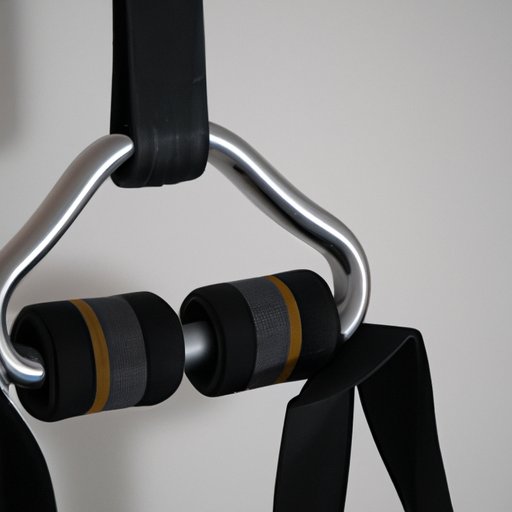
Introduction
Pull-ups are one of the most effective compound exercises to build upper body strength. However, mastering the exercise can be challenging for most people. The ability to pull your full body weight up and down requires proper form, technique, and strength. This article will provide tips and techniques to help you progress from a beginner to a pro in executing pull-ups.
Form and Technique
The correct form and technique are essential when performing pull-ups to avoid injuring yourself and to maximize the benefits of the exercise. Proper form involves gripping the bar tightly, keeping your elbows close to your body, and pulling your chest towards the bar.
Avoid shrugging your shoulders and using only your arms to pull yourself up – this can lead to injury and not work the targeted muscles effectively. Engage your core by squeezing your glutes and keeping your legs straight or tucked in.
Progressing with Bodyweight Exercises
As a beginner, it can be challenging to execute a full pull-up. Incorporating bodyweight exercises such as Australian pull-ups, jumping pull-ups, and negatives exercises can help you build the necessary strength to eventually perform a full pull-up. Australian pull-ups involve a horizontal pull that is easier on the shoulders, while negative exercises involve lowering yourself slowly from the top position of a pull-up.
Resistance Band Training
Resistance bands are an excellent tool to assist in pull-up training. They work by decreasing the resistance and weight you need to lift, making the exercise easier. Start by anchoring the band over the bar and looping it over your foot or knee. As you progress, switch to a thicker band to increase resistance gradually.
Incorporating Weight Training
Heavy weights and compound exercises such as bent-over rows, lat pulldowns, and dumbbell rows can improve your grip and build your back muscles and upper body strength. This can make it easier to pull yourself up and down.
Frequency and Consistency
Training frequency and consistency are essential when working towards full pull-ups. Overtraining can lead to burnout, while undertraining can lead to slow progress. Incorporating pull-up training into your regular workout routine three to four times a week can help you build strength and improve performance.
Nutrition
Proper nutrition is vital in building strength and muscle mass, supporting adaptation and recovery after workouts. Ensure you have a well-balanced diet, with a balance of carbohydrates, fat, and protein. Protein intake is essential in muscle building – aim for at least 0.8 grams of protein per pound of body weight.
Mental Conditioning
Performing pull-ups requires strength, but it also requires mental resilience. Believe in yourself, set achievable goals, visualize yourself doing the exercise, and stay persistent. Adopting a positive mindset can help you through the challenging moments and keep you motivated.
Conclusion
Improving your pull-up skills takes time, dedication, and effort. By utilizing proper form, progressive exercises, resistance bands, weight training, proper nutrition, and mental conditioning, you can make significant progress and work towards achieving full pull-ups. Remember to listen to your body, set achievable goals, and stay consistent. With persistence, you’ll be pulling your body weight up and down in no time.
For more information on pull-up training, check out certified trainers and their workout plans. You can also watch videos of professionals and learn their techniques.





